HELIANTHUS
Helianthus
L., Sp. Pl. 2: 904. 1753; Gen. Pl. ed. 5: 386. 1754; Fl. China @ eFloras.org 20-21: 874; Schlling, Fl. North Amer. @ eFloras.org 21: 141.
Annuals or perennials. Stems erect to ascending, decumbent, usually branched distally. Leaves basal and/ or cauline, opposite or alternate; petiolate or sessile; blade usually 3- nerved, mostly deltate, linear-lanceolate, ovate-lanceolate, linear or ovate, both surfaces glabrous or hairy, often gland- dotted, base cordate to narrowly cuneate, margin usually entire or serrate, rarely lobed. Synflorescence of solitary capitula or of corymbs, panicles or spikes. Capitula usually radiate, rarely discoid. Involucres usually hemispheric, sometimes campanulate or cylindric. Phyllaries persistent, 11-40 (-100+ in cultivars) in 2 or 3 series, subequal to unequal. Receptacle flat to slightly convex or conical, paleate; paleae conduplicate, usually rectangular-oblong, usually 3-toothed, sometimes entire, apices sometimes reddish or purplish. Ray florets: 5-30 (-100+ in cultivars), rarely 0, neuter, corollas usually yellow. Disc florets: Numerous, 15-150 ( -1000+ in cultivars), bisexual, fertile. Corollas yellow or reddish (at least distally); tube shorter than campanulate throats, lobes 5, triangular. Cypselae usually purplish black, sometimes mottled, +/- obpyramidal, +/- compressed. Pappus 0 or readily falling, of 2(-3) usually lanceolate, aristate or erose scales (1-5 mm), plus 0-8 usually shorter scales (0.2-2 mm).
55 species
Helianthus annuus
Helianthus annuus
L., Sp. Pl. 2: 904. 1753; Gen. Pl. ed. 5: 388. 1754; Fl. China @ eFloras.org 20-21: 875; Schilling, Fl. North Amer. @ eFloras.org 21: 149.
Annuals, 1-3 m tall, hispid. Stem erect, branched, usually distally, usually hispid. Leaves mostly cauline, alternate; petiole 2-20 cm long, hispid; leaf blade ovate-lanceolate to ovate, 10-40 cm x 5-40 cm, usually +/- hispid, sometimes gland-dotted, base cuneate to subcordate to cordate, margin serrate. Capitula radiate, 1-9 in corymbose or paniculate arrays; peduncles 2-20 cm long, hispid. Involucre usually hemispherical, broader, 1-4 (-20) cm in diameter. Phyllaries 30 (-100), ovate to ovate-lanceolate, 1.3-2.5 cm x 3-8 mm, abaxially usually hirsute to hispid, rarely glabrate or glabrous, usually gland-dotted, margin usually ciliate, apex abruptly narrowed, long acuminate. Receptacle flat, paleate; paleae conduplicate, 9-11 mm long, 3-toothed, middle tooth long, acuminate, glabrous or hispid, apices reddish or purplish. Ray florets: 13-30+, neuter, yellow. Corollas yellow; tube short; limb oblong-ovate or oblong-elliptic. Disc florets: Numerous, 150-1000+, bisexual, fertile. Corolla tube shorter than campanulate throat, lobes 5, deltate or deltate-lanceolate, throat bulbous at base, tube and bulbous part of throat pubescent. Anthers dark brown; apical appendages white. Cypselae 4-5(-15) mm long, glabrate or hairy, black, +/- obpyramidal, +/- compressed. Pappus of 2 lanceolate scales, 2-3.5 mm plus small 0-4 obtuse scales, 0.5-1 mm.
Common Names: Sunflower; Surajmukhi (Hindi)
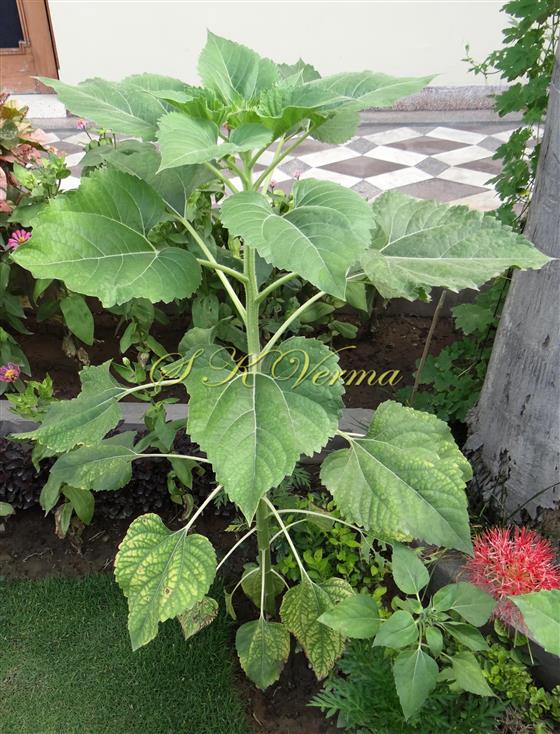
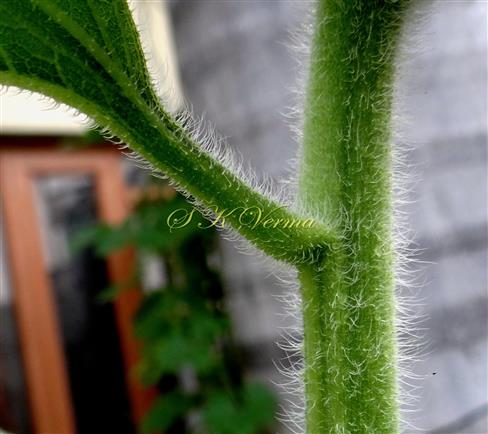
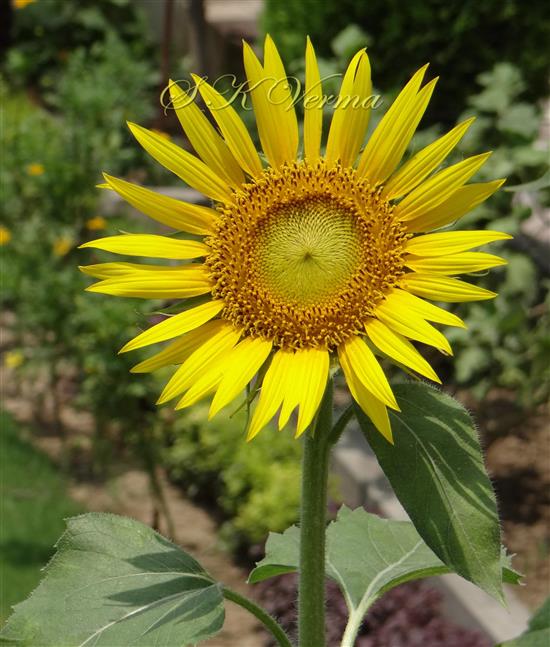
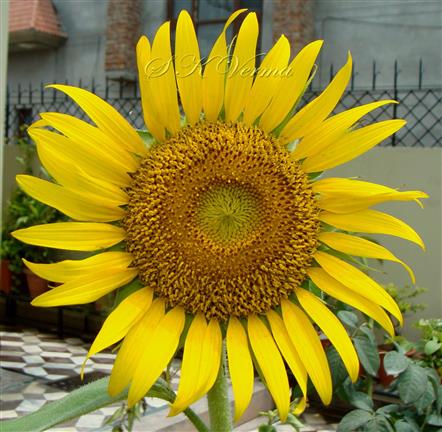
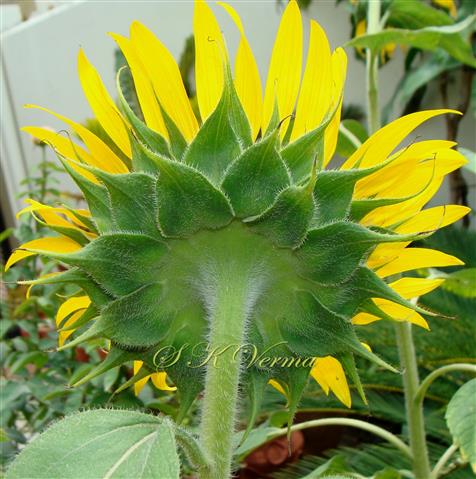
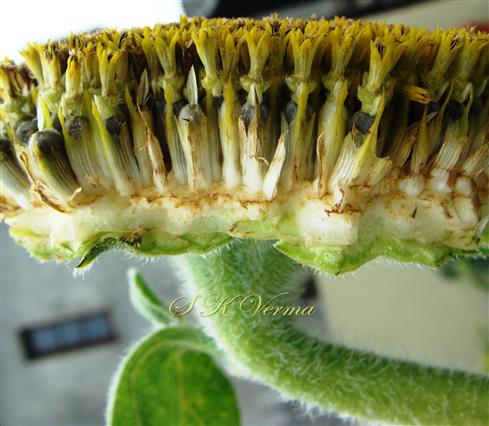
-DSC05310A.jpg)
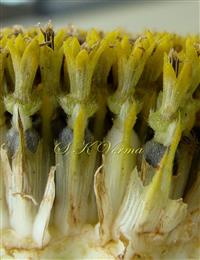







-DSC05310A.jpg)
